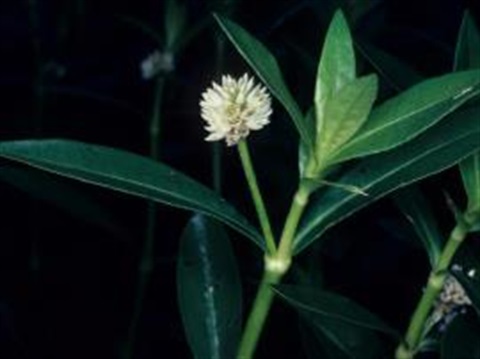
Snowy Monaro Regional Council is calling on all community members to get to know our region's weeds so we can all play our part in protecting our environment, helping our farmers and supporting our community.
The impact of weeds on our community can be devastating and is estimated to cost the NSW economy about $1.8 billion annually (NSW Department of Industry, 2018).
This is the third article in our Weed of the Week series, where we'll be sharing information on our region's priority weeds, this week focusing on Alligator Weed (Alternanthera philoxeroides).
This week we would like to remind everyone that some water plants are potentially devastating weeds. Before buying plants online for your fish tank or pond, it is vital to check they are not an invasive weed.
Waterweeds have negative effects on the aquatic environment and directly threaten the viability of turf farming, vegetable production as well as mines and quarries.
One of these devastating waterweeds is Alligator Weed.
What is Alligator Weed?
Alligator Weed is a high-risk weed because it grows in water and on land, invading both aquatic and terrestrial environments.
Alligator Weed is a summer growing perennial herb. It has small white papery flower heads 8–10mm in diameter, appearing from November to March. Alligator Weed has leaves occurring in opposite pairs along the stems. The leaves are shiny, spear-shaped, sessile (no stalk), entire and about 2–7cm long and 1–2cm wide. The plant forms dense mats of interwoven creeping and layering stems. On land, stems are shorter and internodes are smaller and less hollow. Alligator Weed has an extensive root system. Roots and stems can extend to more than 1m below the surface. Root storage tissues allow for plant survival over long dry periods.
When it grows in the water, it can float on top of the surface or attach to the bank. It can also grow in gardens as an upright stand, or creeping amongst other vegetation, or flat in the lawn.
Why is Alligator Weed a problem?
In Australia, it is a Weed of National Significance (WoNS) and a serious weed in thirty other countries around the world. More than 500 infestations of Alligator Weed have been confirmed in the Sydney metropolitan area, and numerous infestations have been reported in many regional areas across NSW.
While it is not currently known to occur in the Snowy Monaro, it is present in neighbouring regions, which is why we need to stay vigilant because it:
- blankets the surface of waterways, impeding the penetration of light and reducing oxygen in the water
- adversely affects aquatic plants and animals
- displaces native plants along river banks, creek banks and wetlands
- has completely shut down small crops and turf farming in parts of the Lower Hunter
- threatens the $50mil turf industry in the Sydney Basin
- makes vegetable production and the extraction industry under threat in the Hawkesbury–Nepean catchment
- contaminates grazing pastures and dominates wetter sections
- restricts use of waterways
- blocks pumps and other water infrastructure
- blocks stream flows, exacerbating flooding and structural damage
- damages tourism industries by limiting water recreation and reduces aesthetic value
- increases mosquito populations
- is easily spread by excavation machinery, boats and trailers, ornamental planting, movement of contaminated soil and landscape supplies, movement of contaminated hay and turf, and fragments caught in livestock hooves
What can you do?
- Learn to identify Alligator Weed
- Search your property for any sign of this priority weed
- The Snowy Monaro region is situated within the Alligator Weed Biosecurity Zone






